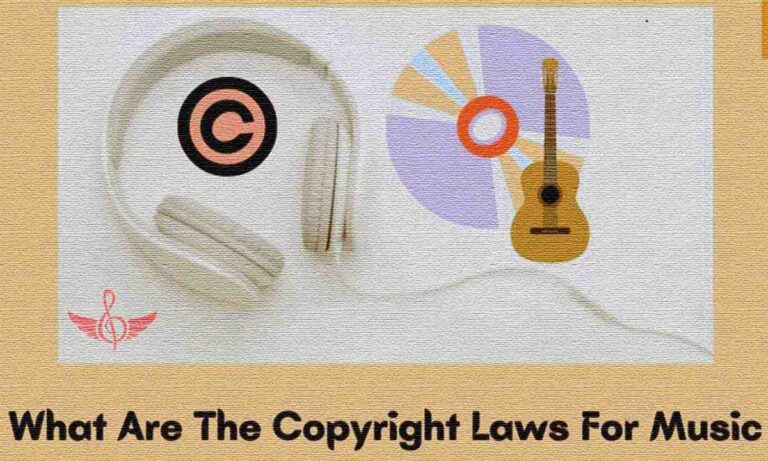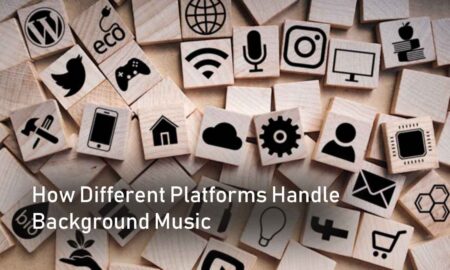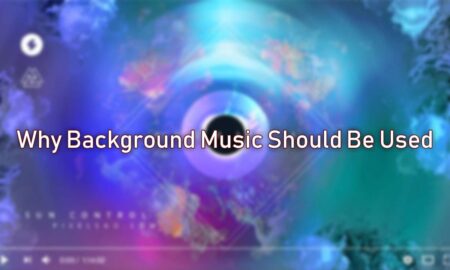The significance of background music in the emotional mood and visual character of the content cannot be underestimated. Whatever the case, be it YouTube video, podcast, advertisement, or computer games background music helps enhance the experience of the users. This said, many of these creators forget one important element: the copyright of the background music.
As such, copyright laws should be well understood to avoid the legal problems and be able to secure the intended work. In this article, we will clarify all the aspects of copyright in case of using background music, and what tools are legal for including music in your works.
What Is Copyright?
Copyright is defined as the exclusive legal right that is given to original authors of the creation of any original work such as music, movies, literature and paintings. Specifically, this legal right is ethical since it gives the authors the power over the usage, distribution and the revenue generated from their creation. This is true since if a person makes a song, he has the legal rights on that song and no one else can claim ownership over that work unless he hands those rights to someone else, be it a recording company or a movie production house.
In the case of background music, there are copyright provisions describing the illegal uses of that music and describing payment terms that will be observed any time that the inked product is put to practical use.
But copyright laws tend to protect nearly every form of music composition, and this implies that using music without permission is an offense. In order to and respect the copyright laws in place, it is important to comprehend which of the works qualifies for copyright and how background music can be legally-used in one’s projects.
The Importance of Understanding Copyright Laws for Background Music
If such provisions are not followed then a person may incur adverse repercussions such as long court cases, huge fines or removal of the content from sites such as YouTube or Facebook. This is because a lot of creators especially the new stakeholders assume that they can include any piece of music they want in their videos or podcasts without any repercussions.
Background Music Copyright License Types
As far as content producers are concerned, of these music licenses, some are more advantageous than others. Let us explore the major types of figures and the limits of their use:
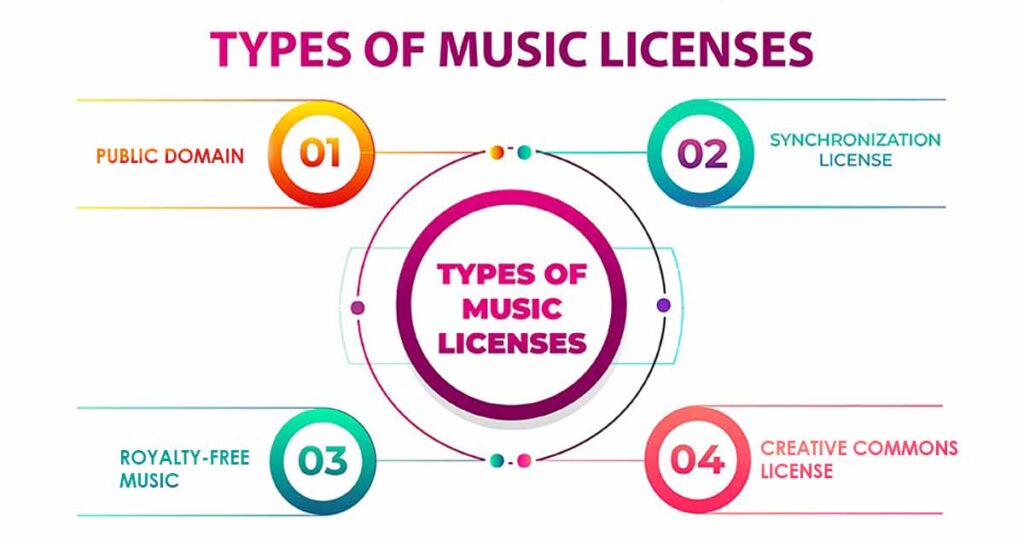
Public Domain
Public domain music have never been copywritten, and as such do not require any permission or any fees for their use. In general, music composition becomes public domain when the copyright period has expired, which is usually 70 years after the death of the last composer.
Still, an old song is not automatically placed in the public domain in its use. It can happen that where the composition is in the public domain, certain arrangement or recording may be copyrighted. Please do not forget to check the status of other pieces of music before using.
Royalty-Free Music
It is obvious that royalty free music is not always free of charge. Royalty Free Music means after the payment of the license fee there is no need to pay the royalties from then on which is an attractive option for content producers since it enables them to incorporate back ground music in several projects at no extra cost.
Epidemic Sound, Audiojungle and Premiumbeat.com among many other platforms have a wealth of royalty free music available for use. When you buy a certain number of tracks, the music is to be used within the given stipulations of the license.
Creative Commons License
Although most creators want to give their works Creative Commons Licenses, thereby allowing the general public to use certain parts of the works, some rights are also retained by them. There are various CC licenses each coming with its own restrictions, some allow anyone to move freely with the work and others give attribution and limits using the music for business purposes only.
For example, some say that in the use of this kind of music restrictions may be imposed for individual projects but such restrictions are not for personal projects. It is vital for someone who intends to use any of such music under this kind of license to carefully go through the details associated with the creative commons license.
Sync Licenses
When any music is to be rendered in any form such as video, i.e. short films, advertisement or even YouTube videos, a synchronization (sync) license is the one which is required. A sync licensing enables the licensee to attach music to the audiovisual work. These licenses are normally acquired by the owner of the musical work or by an agency that deals with the licenses.
However, acquiring a sync license poses as a costly affair mostly when it comes to the ever popular songs and the reason being that manufacturers need to reach some agreements with those who have the music rights. Still it is necessary for implementation of whatever new videos that you are working on that contain copyrighted music.
Background Music Copyright Infringements
Although in today’s world a variety of licenses and license-free materials are available, many creators of content still often break copyright legislation unintentionally. Here are some infringements worth mentioning:
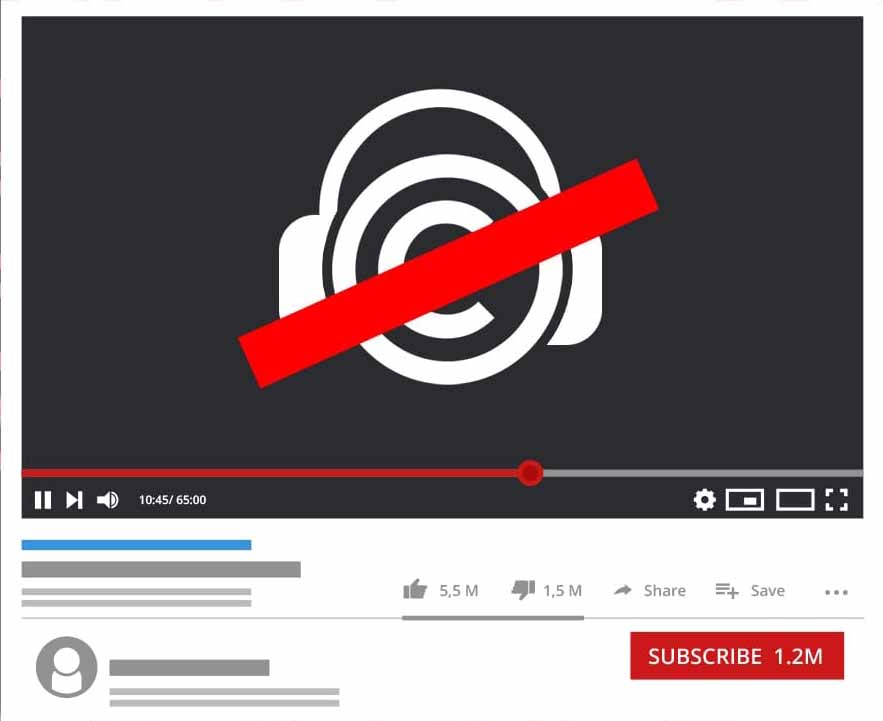
Playing Well-Known Songs Without Licensing
When it comes to videos, many creators including vloggers tend to overuse popular songs and think that there are no consequences about using them. Nonetheless, most popular music is copyrighted, and therefore almost all cases of improper use can result in content being removed or copyright takedown notices being issued to the account, for instance on YouTube.
Believing That Music Which Is On The Internet Is Free Of Any Copy Rights
It is always an incorrect mentality to think some music is free just because it can be found on some websites. Just because there are many copyright free sites or youtube Soundcloud uploads, many self producing creators make a grave error and edit copyright material worried free.
Looking at License Conditions Laxly And With Little Care
Still, despite the fact that the music given is royalty free or sources with Creative commons, there are other restrictions that one would wish to pay attention to. Sometimes such licenses require authorship acknowledgements such as putting the name of the composer while there are licenses that do not permit any economic exploitation of such works. Neglecting any of those aspects constitutes being in breach of copyright as well.
How to Protect Yourself from Copyright Issues
What steps then should be taken in order not to get into a serious trouble with the law? Here are some recommendations that should help you comply with copyright obligations when background music is used:
Use Licensed Music
Using properly licensed music is the simplest way of avoiding copyright infringement claims. Regardless of how one gets permission through the purchase of a licenc, be it the use of royalty free music or suing for a sync license, permission is always essential.
Opt for Public Domain or Creative Commons Music
Where there exist works in public domain, these can be used freely, and also certain creative commons licenses permit free use with respect to certain conditions. These alternatives eliminate unlawful copyright infringements even while adding music to the non-music audio works.
Create Your Own Music
If your talent allows for it, creating your own music will exclude you from any such copyright risks. Likewise, commissioning a composer or a musician to compose music specifically for your needs guarantees you that you will have all the rights of the background music.
Access audio music provided by YouTube
YouTube also provides audio background music and effects that the video creators are permitted to use freely. The music available in the library does not require any additional payments.
Consequences of Violating Copyright Laws
When using background music, infringement of the copyright laws is punishable by law. This is all too painful to elaborate on. Some of the areas include:
- Monetization Restrictions: When there are unauthorized uses of copyrighted music, the owner of the copyright can collect all of the monetization that is collected from the content without paying the user any of the merits.
- Content Removal: Hosts of videos like YouTube or Facebook frequently delete the videos and content that infringe copyright.
- Legal Action: There is a situation where the owner of the copyright or patent can claim damages, which involves expensive court costs and costs associated with settling the case.
Conclusion
Any content creator knows that protection and understanding the various copyright laws for background music is crucial to avoid unnecessary risks and be able to protect their work. It is possible to defend your creative copyright; if you only use commercial music by paying the right fees, use only music in the public domain, or use royalty-free music adhering to all possible restrictions. Such precautionary measures will certainly save many frustrations and challenges in future.
There are various repercussions of using music that is protected by copyright, including:
- Removal of content from platforms such as Youtube and Facebook.
- Flagging of Copyright infringements, in which case the might affect the credibility of the account.
- People may also miss out on making money on the video because the revenue might be diverted to the copyright owners.
- In the most serious of cases, legal action or fines.
FAQs
Is it permissible to use any type of music as background music in my YouTube videos if I give credit to the musician?
No, giving credit is not enough to cover the use of any copyrighted music. You cannot use the music without first obtaining the necessary licenses or permissions. Even with credit, copyright music used without permission opens room for copyright infringement where your video might be flagged, taken down or demonetized.
What will happen if I make use of a copyrighted music track without obtaining necessary permissions?
There are various repercussions of using music that is protected by copyright, including:
1. Removal of content from platforms such as YouTube and Facebook.
2. Flagging of copyright infringements, which could affect the credibility of the account.
3. Loss of monetization, as the revenue may be diverted to the copyright owners.
4. In the most serious cases, legal action or fines.
In what ways can I locate such music that I can use in my content legally without paying royalties for?
There are a number of sources where you can obtain such music, such as:
1. YouTube Audio Library (free to use with attribution).
2. Epidemic Sound, AudioJungle and PremiumBeat – these paid versions only require a one-off charge, however, ensure you understand and abide by the license packed with the product.
How does royalty-free music differ from public domain and copyright free music?
Royalty-free music is music purchased for a single fee rather than being paid for in continued royalties for every time it is used. The creator’s rights are still retained but licensing permission has been granted to the user.
Public domain music refers to a type of music which is free to the public for use because no one has any legal claim over it or it has become out of copyright. This type of music is free to be used for any purpose.

